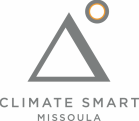|
This week has been quite the emotional roller coaster. The passing of our visionary, kind, and tenacious Mayor, and the most significant climate legislation in US history becoming law with the signing of the Inflation Reduction Act. Lows and highs. Both more impactful than I can get my head around.
First, John Engen. In the past few days, so much has been written, spoken, and shared about John and his legacy, how much he gave and how much he will be missed, his humor and his heart. His legacy is evident in many different arenas, from building a vibrant downtown, to owning our water system, to bringing zero-fare to Mountain Line, to believing safe, affordable housing is deserved by all. John’s legacy also includes over a decade of helping Missoula take climate seriously and make bold commitments to act, commitments that we work to accelerate today. It was not as common or popular back in 2011 to dedicate city staff to research our greenhouse gas emissions and create plans to address them. John was the first mayor in Montana to join the national Mayor’s Climate Network and convene a task force to determine what the city can and should do, even asking his task force to “go bold” and set an ambitious goal of carbon neutrality for municipal operations by 2025. In the years after crafting that first plan, I spent many hours in John’s mayoral office, discussing what was missing in Missoula in the climate sphere, and he helped me imagine what would become our organization, Climate Smart Missoula. He offered to convene the right community partners and ask for their commitments. It’s not that John made climate actions happen himself, but rather he made sure those who could were connected, had agency, set ambitious goals, and kept at it. I’ll admit that recently, as the climate crisis has intensified, I’ve wanted our mayor to focus more attention on it. (And the City. And everyone.) The pressures on our city are many, and no doubt it’s difficult to meet this moment. So, we’ll keep making noise about it and advocating for solutions that address climate and the other challenges we face at the same time. I am known as someone who tries to (strategically) push for more, act on my values, and build partnerships, and as I reflect, I know I learned this from Missoula’s longest-serving Mayor. And there is a connection to this week’s signing into law the biggest climate legislation ever passed by Congress. It’s not perfect, and it’s not the end of story, but it took persistence and a “never give up” attitude from countless activists, leaders and policy experts to get this first step passed, setting us on a new course aimed at addressing our climate emergency. John Engen’s earlier efforts, together with our collective commitments and partners, including the City and the County, have positioned Missoula to avail ourselves of funding included in the Inflation Reduction Act (IRA). John helped lay the groundwork, strengthened relationships, and showed us how to be nimble and keep our eye on the prize – a vibrant and resilient community that works for everyone. We’re increasingly well-prepared to accelerate our work with support from this new legislation, and with more people engaged. “Historic, imperfect, transformational” -- these seem to be the most common words I hear from fellow climate wonks about the climate and energy provisions in this massive new IRA bill. “Awesome, you must be stoked” – is what I hear from everyone who knows what I do for a living. It’s all those things and more. As these things go, the reality of all the bill contains is nuanced. But in a nutshell, it enables the first sustained period of declining fossil energy consumption in US history, even with its significant flaws. We’ll have lots more to share about what this legislation means for Missoula residents, businesses, nonprofits and local government, in the coming months and even years. Climate Smart Missoula is already working in partnership with the City, Missoula County and others to understand and implement efforts to reduce fossil fuels and energy use in buildings, efforts which will no doubt accelerate thanks to the IRA. Affordable housing is not just about monthly rent or mortgage payments, but also about stable energy bills, healthy indoor air, and the ability to be comfortable in the winter and cool in the summer – and fully electrified buildings with heat pumps are the best way to get at all these. Funding from this legislation will absolutely help us Electrify Missoula, and we're excited. If you are thinking of electrifying your home or purchasing electric appliances but it’s not essential this year, hold on until 2023. If you’re thinking of going solar this year, go for it. This new IRA legislation will make both possible for more Montanans. Just as John set the table for momentum to grow climate solutions locally, this new era of federal action is setting the table for so much more climate action the world over. We have this table thanks to climate visionaries, leaders, and activists. We have a seat at that table, thanks in no small part to John Engen’s vision. - Amy Cilimburg
0 Comments
Over the next several weeks, we'll be sharing letters for our DearTomorrow project. We hope you'll read, get inspired, then write your own! It's a great way to commit to taking action in 2020 and motivate and engage others in our community. 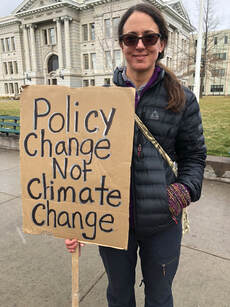 My Children, I am sitting here writing this letter on a quiet Sunday afternoon. The wind is gusting, blowing the piles of leaves into the air and depositing them in dusty, forlorn and forgotten corners. The leaves, most of them still clinging to the trees, crinkly and brown, are unwilling participants in the changing climate. A reminder of the record breaking cold snap from last month, having frozen them in place, denying them their time of glory and natural order of business. The subtle ringing of the wind chimes, a harbinger of the cold front that is moving in. The weather is as unsettled as I am. I fear for your future and what it may bring. I used to dream of grandchildren, now I no longer do. I don't want you to have to carry the burden of bringing children into this devastatingly sad, changing and unknown world. Will you have the ease of life that we do now? Will you have secure food, jobs, the ability to travel and adventure as I did in my youth? Will you be able to watch the confident and gregarious chickadees at the feeder, frantically filling up with food in order to survive the upcoming frigid night? I’ve just read that they are one of the many bird species that are slated to disappear here in Montana. Will you be able to spend your summers outside, or will they be spent escaping the choking smoke from wildfires? Will you be able to observe the docile bumble bee, fuzzy backside protruding from the flowers? The remaining ones are now endangered, many species already extinct. I’ll continue to plant their beloved flowers and fill up the colorful bee bath daily, hoping that it makes a difference. Gabe, will the rivers run dry in summer heat? Will you be able to spend your summers in frigid, swirling waters stalking the elusive trout that you love so much? The water flow in our rivers and streams are running lower now. Mica, will you be able to climb the high peaks in search of your beloved pikas? Is it too late? They are running out of the higher elevations on their mountain top homes to escape from the increasingly oppressive heat of summers. When will there be nowhere else for them to go? Mayana, will you be able to seek your peace and quiet in the woods around your home, wandering thoughtfully and observantly? Reading in the hammock while the warm summer breezes cool your damp skin? Or will the ponderosa and aspen trees no longer have the precipitation needed to grow. Instead, will you have treeless, dry hillsides to wander on? I read that this may be the case. I was told that we need to prepare ourselves for a changing landscape as trees make way for grasslands. Forest fires will instead become grass and scrubland fires. This is why I act. Not because I want to, but because I must. Doing exactly what introverts find so hard. But I do it for you and those who come after me. For the animals and plants, the trees and the rivers. I must hope that it will be enough, otherwise it becomes too much to contemplate. For now I act. And make plans. Plans to visit the places that are disappearing, that your children will never see, and the places that you may not get a chance to experience if we don’t go soon. The special places of my youth. Already changed, remnants of what they once were, but still hanging on. To see, touch, and smell the receding glaciers. The birds and flowers. The pikas living above the tree line, frantically preparing for a winter that they hope will still come. For you my children, I hope. This letter submitted by Rachel K in Missoula. Submit your letter online today.
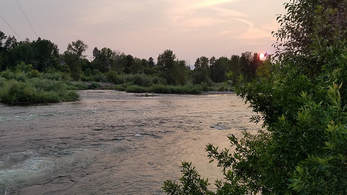 Summer smoky skies along the Clark Fork in Missoula. (Photo: Abby Huseth) Summer smoky skies along the Clark Fork in Missoula. (Photo: Abby Huseth) Call me biased, but our monthly meetups are pretty great. I think you’d be hard pressed to find a more interesting and wide-ranging conversation anywhere in town. Where else can you talk about pumped hydro energy storage technology, the virtues of lentil farming, the perils of human urine, and industrial-scale composting, all in the span of an hour and a half? If you couldn’t tell, the common thread running through these subjects is water – more specifically, the implications of climate change when it comes to our rivers, our drinking water, and our wastewater. That was the theme on tap for our August 2, 2018 monthly meetup - here's a recap of our conversation. Our Rivers Alex and Katie from the Clark Fork Coalition joined us to talk about what they’re seeing along the Clark Fork, here in town but also throughout our larger watershed. Alex was one of the authors of the Montana Climate Assessment, so he knows his stuff. CFC measures water all over the river, and this year there was a record snowpack in the upper Clark Fork, and a fairly wet spring. But this July was also the second driest on record – which, sure enough, was what the MT Climate Assessment predicted. Despite this lack of rainfall, we’re still seeing decent flow levels and relatively cooler water temperatures all along the Clark Fork because of something you might not have guessed: groundwater. In fact, we learned that 90% (!) of a watershed’s waterflow is actually underground. Whoa. So despite the trend of more spring precipitation and longer droughts in our region, the snowpack and rain may end up boosting the “natural storage” capacity of the watershed. That might sound good, but we’re definitely not out of the woods climate-wise when it comes to our rivers. Hotter temperatures mean higher rates of evapotranspiration, thus plants need more water to grow. More study is needed on what this means for the long-term evolution of our forest ecology. Alex reminded us that 95% of our state’s water use is due to agriculture. This is where we wade into the complicated realm of water rights and Helena lobbying interests, and then wade right back out again, because we could really get stuck there. Suffice to say, even when a rancher wants to return their water right to in-stream, it’s super hard to do. And most of the agriculture in our state is low-value commodity ag, so it’s hard to economically justify efforts to conserve water. What we could really use is more lentils! No, seriously – legumes and other dry-farmed products are a growing sector of Montana agriculture, which is pretty cool, and water smart. (Check out the Lentil Underground!) Ok, one last interesting issue at the nexus of water and climate that I hadn’t considered before. Katie from CFC talked about their recent studies on recreation on the Clark Fork river. As we experience more heat waves during the summer, more and more people are using the river to cool down. On one hand, dunking in the river is better than cranking the A/C. But in addition to bumper-to-bumper tube traffic on certain sections of the river, more river recreators means streambank erosion, more trash, and an overabundance of human urine. Yep. So it’s possible that we might we need more official river access points…with port-a-pottys. Thanks, climate change!
Avoiding overwatering outdoors is important too (those subdivided ranchettes with giant lawns don’t help...), but by all means keep your veggie patch green and water your trees - we need them to keep our city cool! If you’ve ever wondered about graywater systems (where water from sinks and laundry is recycled, either to flush toilets or for irrigation), they are allowed here but you’ll want to read up on the rules and regulations. 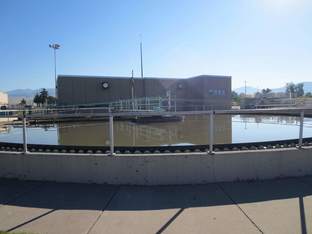 A primary treatment pond at the WWTP where most of the bio-waste settles before it is dewatered and composted. (Photo: Mattie Lehman) A primary treatment pond at the WWTP where most of the bio-waste settles before it is dewatered and composted. (Photo: Mattie Lehman) Our Wastewater Treatment Plant Rocks! So, what about that last piece of the water+energy puzzle – the treatment of our sewage and wastewater? Turns out, our humble little municipal wastewater treatment plant is light years ahead of most facilities around the country! Our intern Mattie shared what she recently learned on a tour, which was that there’s resource recovery happening with all three different waste streams created by the plant: the bio-solids (solid waste), the effluent (liquid waste), and methane gas. The City-owned Garden City Compost, right next door, accepts treated bio-solids, which are then turned into compost that’s available for sale, as well as used on the neighboring plantation of poplar trees. The poplar plantation is also a destination for a large volume of the effluent. The trees and soil filter the effluent before it returns to the aquifer, and the nutrients benefit the fast-growing trees, which can then be harvested in succession and sold for wood products. And if that wasn’t enough, the wastewater treatment plant also recently put a new methane cogeneration plant online. This dual technology recovers lost heat as well as generates electricity from the recaptured methane – covering 25% of the plant’s usage at peak! All of these sustainable elements reduce the impact of the resource-intensive process needed to get wastewater to meet the high standards for discharge back into the river, and mean that ultimately less has to get discharged. (Mattie's been working on a "Storymap" project highlighting this story as well as other "energy stories" around town - we're looking forward to sharing her great work soon. In the meantime, check out this handy infographic on the WWTP resource recovery efforts that she created.) Water, Climate, and Missoula’s Future
As our climate changes and our population here grows, keeping our rivers cool and plentiful for fish and humans, and conserving water and the energy embedded in it will be more and more critical. We’re grateful for the visionary and hard work of the Clark Fork Coalition, our Wastewater Treatment Plant staff, Missoula Water, Garden City Compost, and so many more great organizations that maintain this resource which is so important to our identity as Missoulians as well as to building climate resilience for a hotter, drier future that is already here. Join us next month for our September meetup on Renewable Energy! Thursday, September 6th, 5-7pm at Imagine Nation as usual. Snacks, tasty beverages, and good conversation guaranteed! -Abby Huseth One truly rewarding thing about Missoula is the active and engaged community our city fosters. At Climate Smart Missoula’s Monthly meetup focused on sustainable transportation and smart growth it was clear much of our community is engaged and ready to make our communal transportation system more sustainable! In a jammed packed room at Imagine Nation Brewery, community members put their active minds and bodies together in hopes of formulating ideas and initiatives which help people reduce their transportation footprint. Transportation is an exciting and essential sector to discuss as it accounts for nearly 37 percent of our communities total emission output. Many community experts in the transportation sector attended the meetup, including Bill Pfeiffer, the community outreach coordinator at Mountain Line, Bob Giordano, director of Free Cycles and Chase Jones, Missoula’s Energy Efficiency and Conservation Coordinator. Transportation and smart growth is multi-dimensional, involving aspects of personal contribution, education, funding and urban planning. These transportation experts helped lead the conversation through the different dimensions by engaging in a dialogue regarding upcoming initiatives that promote sustainable transportation and allow community members to make a personal impact. Here’s some exciting opportunities and ways to get involved: 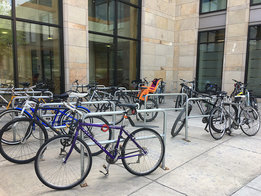 Director of Free Cycles and long-time bike advocate Bob Giordano has helped nearly 15,000 people gain access to a bicycle in Missoula. Bob and other transportation leaders in our community would like to shift the dynamic away from a car dominated transportation system towards a system that’s more inclusive of bikers and users of public transit. Bob admits that significant barriers remain for reducing single occupancy vehicles (SOVs), like accessibility to bike lanes and comfort level in a vehicle centered urban landscape. In order to help solve this issue, street design and policy change is needed. Bob was excited to discuss a proposed city council resolution regarding a 5th and 6th street bike lane change that would increase accessibility and safety for bicycles. He encouraged the group to contact their city council representatives and spread the word about the proposed bike lanes. 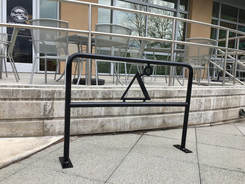 In addition to education and personal contribution, a transportation plan needs “smart growth” in order to meet long term GHG reduction goals. So what does smart growth mean? “Smart growth” refers to planning that promotes multiple route options and multiple transportation systems to increase efficiency and reduce congestion in a transportation system. A few exciting “smart growth” city planning projects were discussed at the meet up. First, Missoulians have an opportunity to become directly involved in city planning through a project called Missoula Design Excellence. Essentially, the project seeks to define and “implement a system that will promote high quality commercial building development in terms of design, materials, construction and character.” The design of new buildings in our community have implications on accessibility for bikers and users of public transit. In order to achieve a holistic plan, which meets the needs and wants of Missoula, the project needs community engagement. The public comment period is currently open, so make your voices heard! If you feel inclined, please Review the Draft Strategy Report and submit comments to by Friday, October 13th. Another important aspect of “smart growth” was mentioned by Bill Pfeiffer, Mountain Line’s community outreach coordinator. Bill spoke about the ability to reduce single occupancy car dependence through increased accessibility to the public transportation system. Bill shared our community’s Long Range Transportation Goals . MPOs Long Range Transportation Plan Ambitious Mode Shift includes goals of 20,000 fewer drive along commute trips, reduction of drive along to 34 %, triple biking, walking and transit shares and provide a carpooling increase by 2045. To achieve these goals, it will be important to provide multiple options of public transportation and come up with intriguing incentives for Missoulian’s to use them. Ultimately, says Bill, using our public transportation system “needs to be really easy”. Checkout the entire Long Range Transportation plan here: With these goals in mind, our community is off to a great start, engaging in productive dialogue and brainstorming ways to build partnerships. The room was still rolling, ready to solve issues and build partnerships when the 7:00 end time came around. The group decided to plan a follow up meeting which we encourage community members to attend. Time and date TBD – stay tuned. Let’s continue to advance Missoula’s quest for sustainable transportation and smart growth. - Max 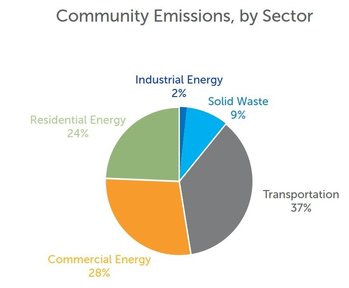 Here in Missoula, this winter sure seemed long, wet and cold – good news for mountain snowpack. But as a new homeowner, this winter was rough on my budget. There’s nothing like getting a $200 energy bill in the mail to get you thinking seriously about saving energy! When we moved in to our house last fall, we had tried a few basic tricks to reduce energy use: replacing old incandescent light bulbs with LEDs; installing programmable thermostats so our heat was only on when we needed it; putting on storm windows to reduce heat loss. Even so, this winter was a wakeup call. I know I’m not alone: many of us want to shrink our carbon footprint - and our bills! But we don't always know how to take the next step. At our April Monthly Meetup last Thursday, the conversation was all about energy efficiency and conservation – and the particular challenges and opportunities around energy use in our community. To put things in context, we were excited to share the results of our first community-wide greenhouse gas emissions inventory, hot off the press last week! The inventory is a complete account of all the emissions sources within the Missoula urban development boundary – and gives us a baseline from which to measure progress towards long- and short-term climate mitigation goals. (Check out the full report here and an article about it in the Missoula Current here!) As the pie chart shows, residential energy use makes up nearly a quarter of our community’s emissions. Not only is this a big slice of the pie, but it’s an area where everyone can get involved. Our individual efforts make a real impact when they are part of a collective movement. That’s why we’re challenging Missoula to be Energy Smart and reduce our use 10% by 2018!
We hope you’ll take us up on our Energy Smart challenge and commit to doing your part to save energy! Here at Climate Smart, we don’t have a silver bullet for how best to track and reduce our energy use, but we’re not going to let perfection get in the way of progress. We’re ready to help Missoula start saving energy - here’s what you can do TODAY to join us:
I’ll leave you with a few of the great energy-saving ideas that came out of our meetup - this is the kind of creative thinking we love to see. Have more ideas? Want to help make these happen? Let us know!
Thanks to everyone who joined us for another great gathering last week! Mark your calendars for the next Monthly Meetup on local food and agriculture – Thursday, May 4th, 5-7pm at Imagine Nation! -Abby Quick survey: which of the following reasons would be most likely to persuade you to make a change, large or small, in your life: a) it would save you money; b) it’s the right thing to do; or c) it will improve your health? If you chose C, you’re in good company. Health is a big motivator for many people – and health professionals are some of the most trusted messengers. Combine this with the fact that research has demonstrated the effectiveness of emphasizing positive benefits in motivating people to act, and you get some interesting insights into how to communicate about climate change, especially with those who may not yet be completely convinced of its seriousness. Climate communication and health was the topic of our March monthly meetup last week – and it was a popular one! The community room at Imagine Nation was packed with folks who came to learn, meet others, and contribute to a great conversation about, well, how to have conversations about climate change. Many thanks to Beth Schenk, nurse scientist and Sustainability Director at St. Patrick Hospital, who facilitated the discussion. Beth started out by sharing some interesting statistics on perceptions about health and climate change among Americans. A recent groundbreaking study by Yale and George Mason Universities identified “6 Americas”: six different attitudes toward climate change that fall along a spectrum, from “Alarmed” on one end to “Dismissive” on the other. It’s a totally fascinating study – I highly recommend checking it out. One surprising insight from this study: the “Alarmed” segment was the only group in which the majority of participants could list a specific health impact of climate change. In other words, those who are aware of the health challenges posed by climate change are alarmed. In our current era of political polarization, it’s tempting to look at the above spectrum and wonder how we could ever bridge the gap. And yet, evidence suggests that changing the conversation around climate change can help move folks further along this spectrum. By emphasizing the co-benefits – those activities, processes, policies, and impacts – of taking action to mitigate climate change, especially in terms of both personal and community health, we can find messages that resonate with all 6 Americas. Wondering what I mean? At our meetup, we came up with some great examples of co-benefits – things that reduce our carbon footprint, while improving health – and then brainstormed some messages that could help convey the value of these efforts. Take a look: I hope these examples give you some inspiration for new ways to frame the climate conversation. While we cannot avoid talking about the urgent and serious negative implications of climate change, it is also critical to discuss climate solutions in a way that offers hope and inspires action. Optimism: Maintaining our Mental Health and Hope We ended the evening with a powerful discussion about hope and optimism when it comes to working on climate change. I know personally there are some days when I feel overwhelmed and sad – I’d guess that you do too. And that’s only natural. Solastalgia is a word coined in 2003 by philosopher Glenn Albrecht, to describe the feeling of distress we feel when we see the natural world around us changing. Solastalgia is a normal response to the reality of climate change. So how do we maintain optimism? This question reminded me of an essay I read a few years ago by the environmental writer David Orr, in which he described the difference between optimism and hope. Orr says, “Optimism leans back, putting its feet up, and wears a confident look, knowing that the deck is stacked. Hope is a verb with its sleeves rolled up. Hopeful people are actively engaged in defying or changing the odds.” So what is the secret? What are some characteristics of these hopeful people? We noticed that they:
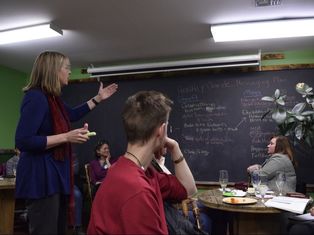 So, what would help US to be more hopeful? Here are just a few ideas that folks shared:
A Few Resources
Some suggested reading and viewing ideas that came up in our conversation:
-Abby This may sound strange, but I have many childhood memories about waste. I remember picking up trash at campsites and on walks along the beach; my dad methodically separating recyclables in the bins under the kitchen sink; my grandma rinsing out plastic ziplock bags to be reused until they fell apart; my mom bringing her reusable grocery bags to the store before it was cool. We didn’t have a lot of money, so things were used and reused. Leftovers were a hot commodity. The underlying message was: nothing goes to waste. When I moved to Montana a few years ago, it was the first place I’d ever lived where there my recycling wasn’t automatically picked up along with my trash each week. Paying extra for recycling?! That seemed crazy – no wonder it wasn’t common. It’s true, we’ve got our work cut out for us here. Montanans make more waste than the national average, at 7 lbs per person, per day, compared with 4.3 lbs. Another dubious distinction: Missoula’s recycling rate of 22% is well below the national average of 35%. I often talk to people who share my frustration about the lack of recycling options here in Missoula. But I’ve also come to learn that the problems with waste are much bigger than what happens to stuff when we dispose of it, either in the landfill or the recycling bin.
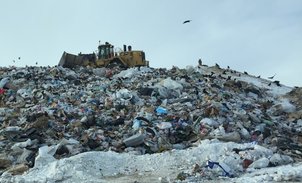 The Missoula Landfill. The Missoula Landfill. Every pound of waste we recycle or throw away represents a shocking 71 pounds of waste that was created upstream (through raw materials extraction, manufacturing, transportation, and everything that happens before stuff gets to us)
Ultimately, we can’t recycle our way to Zero Waste – there’s a reason Reduce and Reuse are the first two Rs! Zero Waste is a lofty aim, but Missoula is making progress. In fact, one big goal within Climate Smart Missoula’s Zero Waste Bucket has already been checked off the list: in February 2016, our city council passed a Zero Waste Resolution, which committed our community to creating a Zero Waste Plan, a blueprint for reaching the ultimate goal of a 90% reduction in waste by 2050. 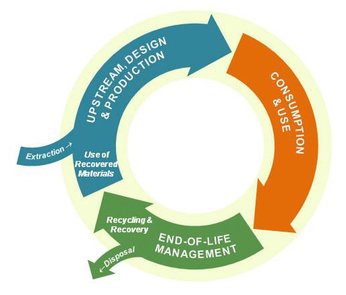 Courtesy Oregon DEQ Materials Management: http://www.oregon.gov/deq/mm/Pages/default.aspx Courtesy Oregon DEQ Materials Management: http://www.oregon.gov/deq/mm/Pages/default.aspx Get Involved! The process of creating that plan is now underway, and to make it a real, practical guide and not just shelf art, we need your input and ideas! Do you think there should be an incentive for developers to hire a deconstruction crew instead of demolition? Would you like to see a municipal composting program for food scraps? Tell us! Here’s how to get involved:
Moving toward zero waste is about recognizing the impact our stuff has across its life cycle – where it comes from, how we use it, and what happens to it when we're done using it. When we Reduce, Reuse, and Recycle, we come closer to living within the natural limits of our planet, creating a healthier, wealthier, and more responsible community for generations to come. -Abby After the hustle and bustle of the holidays, the sudden arrival of the new year often sneaks up on me. The fully decorated Christmas tree still standing in my living room seems like a painful reminder of unfinished business. There never seems to be quite enough time! Are we ever really ready for a new year to begin? Ready or not, 2017 is here. And we at Climate Smart Missoula are ready to dive back in and keep working towards the big picture we know is achievable when we all work together: a low-carbon, healthy, resilient community. We had a great group of folks join us to kick off our first Monthly Meetup of the year last night at INBC, focused on education and outreach and our community emissions inventory. These two things are connected pretty closely – and both are at the heart of why Climate Smart Missoula exists. Educating our community about the nexus between climate change and lots of important issues (like water, energy, local food and more) is a big part of our work. We’ve got a website and facebook page with resources which we’re updating constantly, but we need your help coming up with more creative ways to do education and outreach. Send your fun and artistic ideas our way!
Last night we also shared some very preliminary insights from our forthcoming first-ever community emissions inventory: basically a carbon footprint for Missoula which breaks down where our emissions come from. Spoiler alert: transportation and home energy use are big. (We’re working on the full report – stay tuned...) Armed with data from our inventory, we can work strategically to shrink our community’s carbon footprint in ways that have a big impact. So, you might be wondering…what might that look like? At our Meetup, our friends from Missoula in Motion joined us to share what they’re doing to promote sustainable transportation. MiM is one of the movers and shakers behind great community events like Walk and Roll Week, Sunday Streets, and Commuter Challenges. Their Way to Go Club is another way to encourage Missoulians to choose an alternative mode of transportation than driving alone in our cars. (This program is making some big changes soon that will make it even more accessible – learn more here!) In fact, our city’s new Long Range Transportation Plan will include an ambitious “mode split” goal of increasing the number of sustainable trips. Check out more information about the planning process here. On the home energy side, we’ve got some big ideas – and we’d love your feedback! Our goal is to reduce residential energy use by 10%. That’s no small potatoes, but together we can do it, and we’re working on a program that’s designed to help you find ways to save energy. The idea is a community energy-saving challenge, where households sign up and commit to cutting their utility bills as much as possible, then compete with one another to earn rewards along the way and see who can make the biggest dent. There would also be an option to join a group (like your workplace, church, neighborhood, or favorite brewery) and compete against other groups for prizes. So…what do you think? Are you in? What incentives would entice you to participate, beyond saving money on your power bills? Let us know! There’s so much more on the radar for 2017. Stay tuned, and keep in touch! 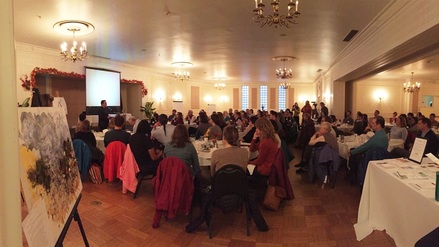 On Friday, over 100 people, from health professionals to city planners to affordable housing advocates and more, turned out for Climate Smart Missoula's third Community Climate Summit, this time to discuss all things climate and health. This diverse cross-section of the Missoula community heard from a panel of excellent speakers about current efforts to address public health challenges at the neighborhood level, the latest cutting edge research on local climate change projections (spoiler: it's going to get hot), and how we can work together to address the mental and physical health impacts wrought by a changing climate, especially for the most vulnerable groups like low-income folks and children. (It's no coincidence that's a key part of our Summer Smart program!) Speaking of Summer Smart - we also unveiled a new video about wildfire smoke - now live on our website. More videos to come soon! For the second half of the morning, we turned the tables: attendees had a chance to share their ideas for how to improve community health for all Missoulians in light of climate challenges. In breakout groups, there were insightful and productive conversations about wildfire smoke and extreme heat, healthy homes and emergency shelters, mental health, wellness and livability, and long-range planning strategies. So much good stuff! We were thrilled by the great turnout and dynamic conversations around the room. Like our previous summits, we were impressed with our community's creativity, collaborative spirit, and dedication. We know that, together, we can take bold action to create the Missoula we want to see.
Here are a few more good things to check out:
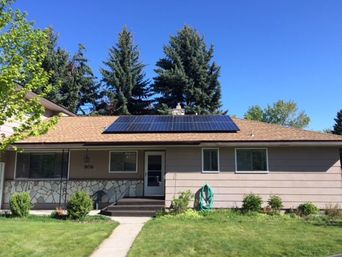 A Solarize Missoula installation. A Solarize Missoula installation. At our Climate Smart Missoula monthly meetups, we love teasing out the connections between climate change and a wide variety of issues that affect our community. Sometimes, those connections may not be obvious until we dig below the surface – like in the case of local food and agriculture. Not so this month. What’s the first image that comes to mind when you think of climate change solutions? A wind turbine? A solar panel? You’re probably not alone – developing renewable energy is a key focus of climate change mitigation strategies, and for good reason. Burning fossil fuels (coal, oil, and natural gas) for energy contributes by far the biggest share of greenhouse gas emissions here in the U.S., so we know that shifting to clean, renewable energy sources like wind, solar, and hydro power is the way of the future. Thankfully, that future is closer every day. One of the goals laid out in our community climate action plan is to move Missoula towards renewable energy. There’s a lot more we can do – but we’re well on our way. Last night, a few good folks were on hand to share a little more about what renewable energy looks like here in Missoula. Local Control over Energy Most of us don’t get to choose where our energy comes from. Our utility – here in the Missoula area, either Northwestern Energy or the Missoula Electric Co-op – buys power from a mixture of power sources, some renewable and others fossil fuel-based, and that mixture of electrons turns your lights on when you flip the switch. But there are some exciting new ways Missoulians can have more control over their energy. One is through community solar, a shared arrangement that allows community members to invest in part of a larger solar installation in exchange for clean energy. As a democratically-run cooperative, Mark Hayden, the general manager for the Missoula Electric Co-op (MEC), explained that MEC installed a 50 kilowatt community solar array in December 2015 in response to co-op members’ desire for more renewable energy. For $700, members essentially purchase one of the panels, guaranteeing them that panel’s energy output for 25 years. There was such demand that it sold out in just a couple months, so MEC has built a second community solar array, this time on the roof of Frenchtown High School. And you may be asking - what about those who can’t afford $700? In collaboration with a local bank and the federal Low-Income Home Energy Assistance Program they help make the benefits of the community solar project accessible to low-income members. Pretty cool stuff! Solarize Missoula is another program that’s moving renewable energy forward in our community, by making the process of rooftop solar installation streamlined and easy for homeowners. Bryan von Lossberg, a key Solarize organizer, explained that through the program four local solar installers put up over 42 new rooftop systems on homes around Missoula last winter – supporting our local economy while shrinking our community carbon footprint. We’re pretty proud that we got to work with great partners like the Montana Renewable Energy Association and the Missoula Federal Credit Union to get Solarize off the ground last year – and it was such a resounding success that we’re doing it again! Keep on the lookout for more information soon and contact us if you would like to be on the list for Solarize Round 2. The Big Picture
We’re thrilled to see more solar going up around town, and we love to see projects that save money and are good for the planet. But we know that there’s lots more progress to be made. Here at Climate Smart, we’ll continue to advocate for laws and regulations at the local and state level that are friendly towards renewable energy development, and support efforts that make renewable energy more accessible for all. But it’s important to remember that the cheapest (and most climate smart) energy is the energy we don’t consume! Anything we can do to be more energy-efficient (like trading out old incandescent light bulbs for LEDs) or simply use less energy goes a long way towards reducing our carbon footprint and boosting the impact of new renewable energy sources. We may not all be able to put solar panels on our roof or take part in a community solar project – but collectively, we can all use energy more wisely and use our votes and voices to advocate for clean energy solutions! |
AuthorsAbby Huseth Archives
July 2024
Categories
All
|
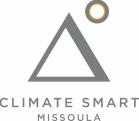
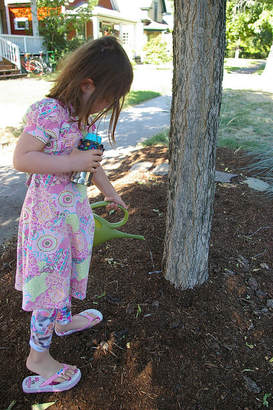
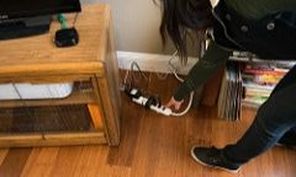
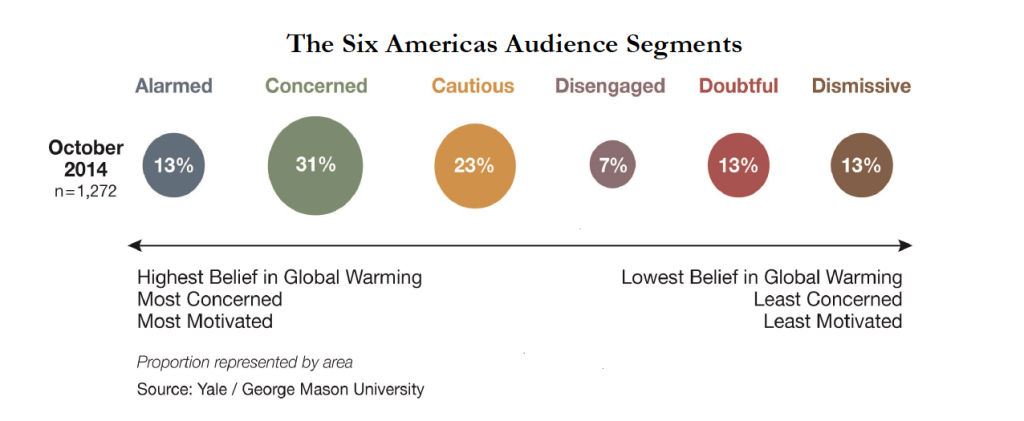
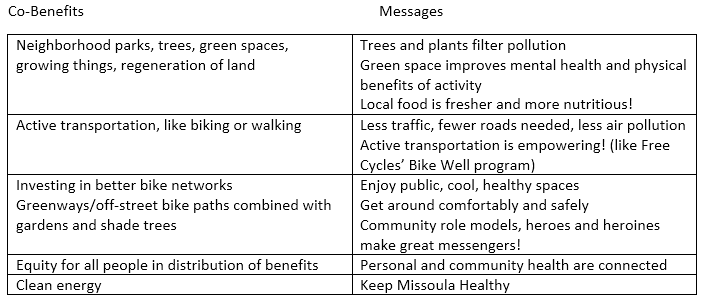
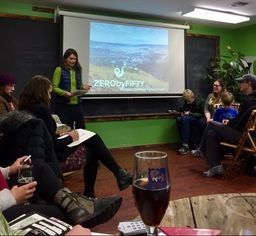
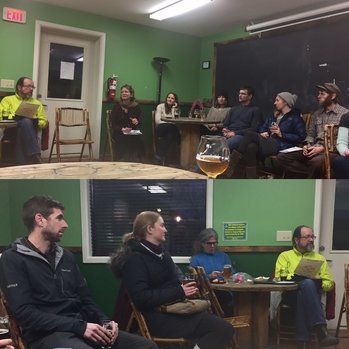
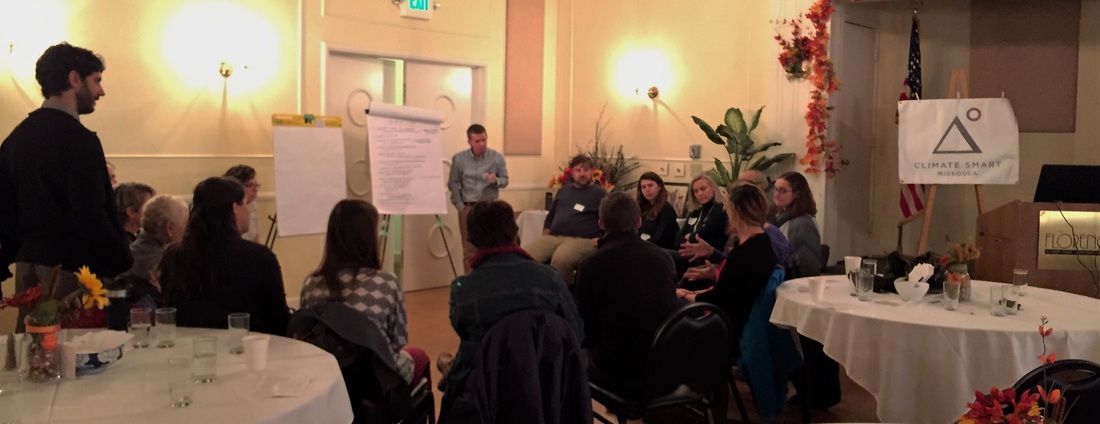
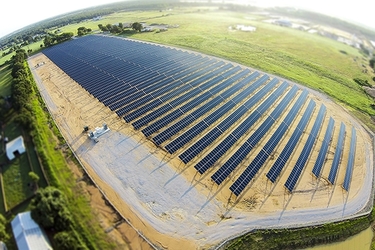
 RSS Feed
RSS Feed


